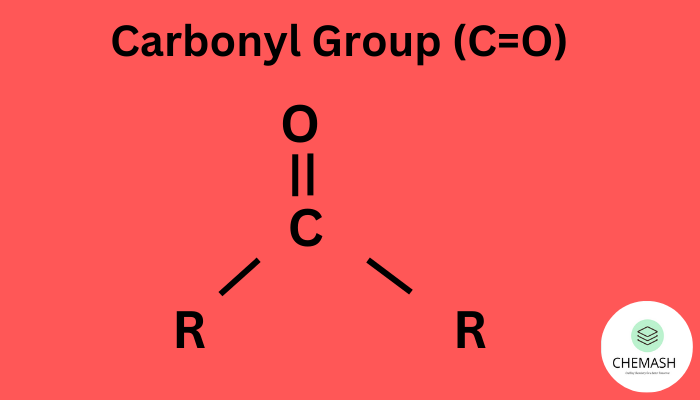Carbonyl Compounds – Structure, Properties, and Reactions

Carbonyl Compounds are organic compounds containing a carbon atom double bonded to an oxygen atom (C=O). They play an important role in organic chemistry and are found in Aldehydes, Ketones, Carboxylic Acids, Esters, and Amides.
Related topics: Wikipedia.
Structure of Carbonyl Group
The carbonyl group consists of a carbon atom double bonded to an oxygen atom (C=O). The bond is polar due to the electronegativity difference between carbon and oxygen, making the carbon electrophilic.
Properties of Carbonyl Compounds
- Polarity: The C=O bond is polar, making carbonyls reactive.
- Boiling Point: Higher than hydrocarbons but lower than alcohols due to dipole-dipole interactions.
- Solubility: Lower members are soluble in water due to hydrogen bonding.
Important Reactions
- Nucleophilic Addition Reactions: Common for aldehydes and ketones.
- Oxidation: Aldehydes oxidize to carboxylic acids, ketones resist oxidation.
- Reduction: Both reduce to alcohols with suitable reagents.
Applications
Carbonyl compounds are used in perfumes, solvents, plastics, pharmaceuticals, and in many biochemical processes.
Multiple Choice Questions (MCQs)
- Which of the following is a carbonyl compound?
a) CH4
b) CH3CHO
c) C2H6
d) CH3OH
✅ Answer: (b) CH3CHO - The carbonyl carbon is:
a) Nucleophilic
b) Electrophilic
c) Neutral
d) None
✅ Answer: (b) Electrophilic
True/False
- All carbonyl compounds have a C=O group. ✅ True
- Ketones can easily be oxidized to acids. ❌ False
Fill in the Blanks
- The bond between carbon and oxygen in the carbonyl group is ________. ✅ Answer: Polar covalent
- Aldehydes oxidize to ________. ✅ Answer: Carboxylic acids
Quick Quiz
Q: Why is the carbon atom in a carbonyl group electrophilic?
Ans: Because oxygen is more electronegative, it pulls electron density, leaving the carbon electron-deficient and susceptible to nucleophilic attack.
